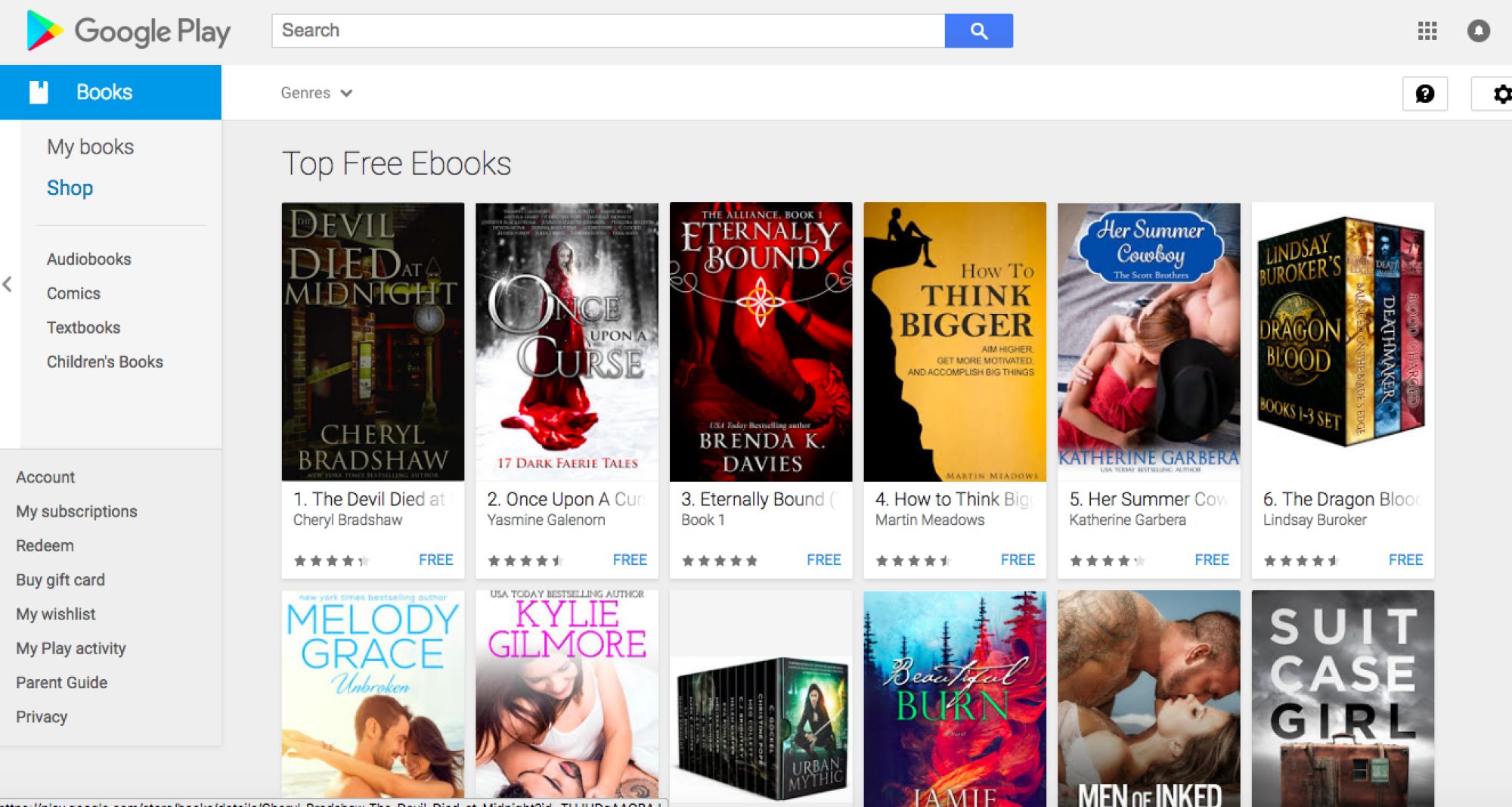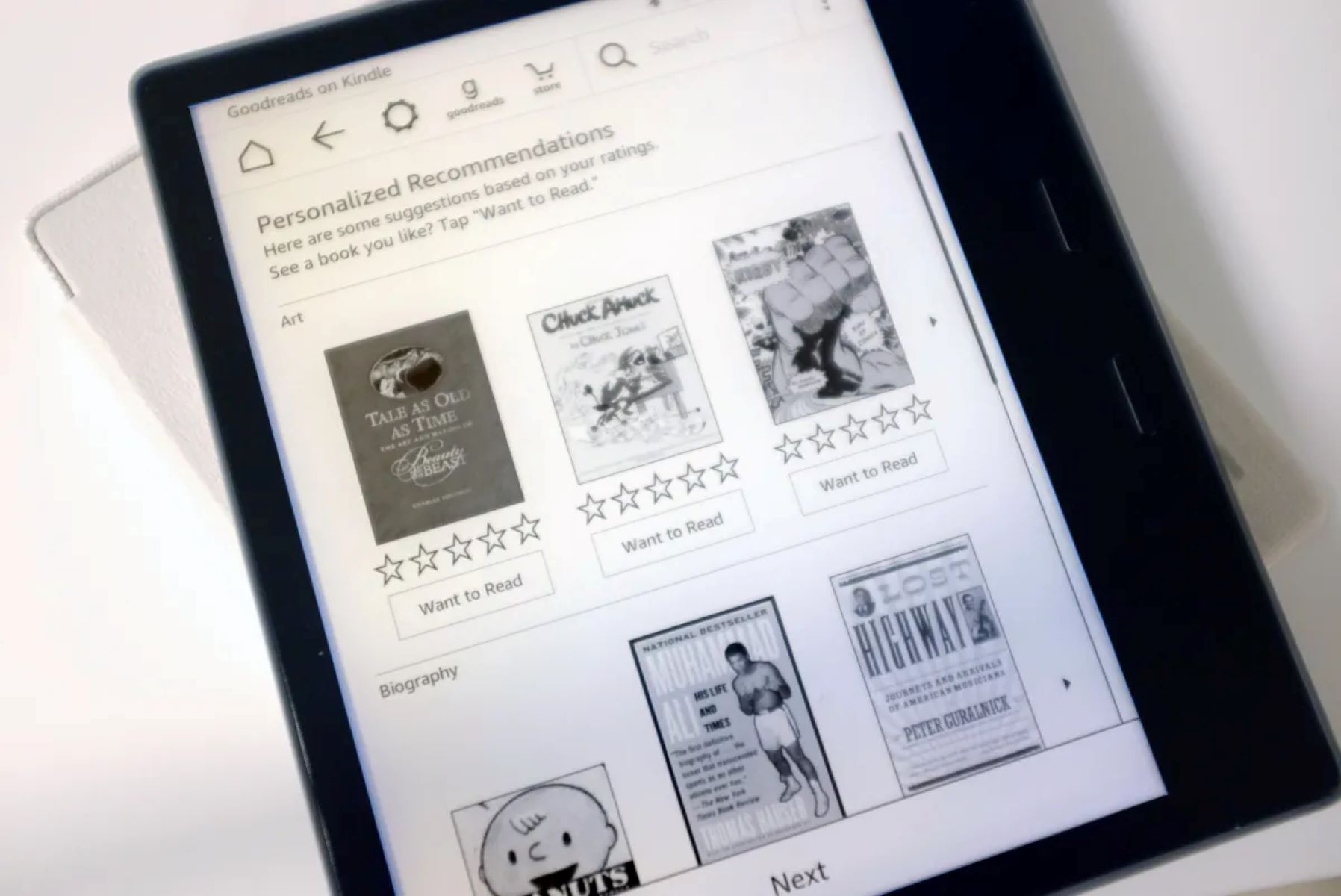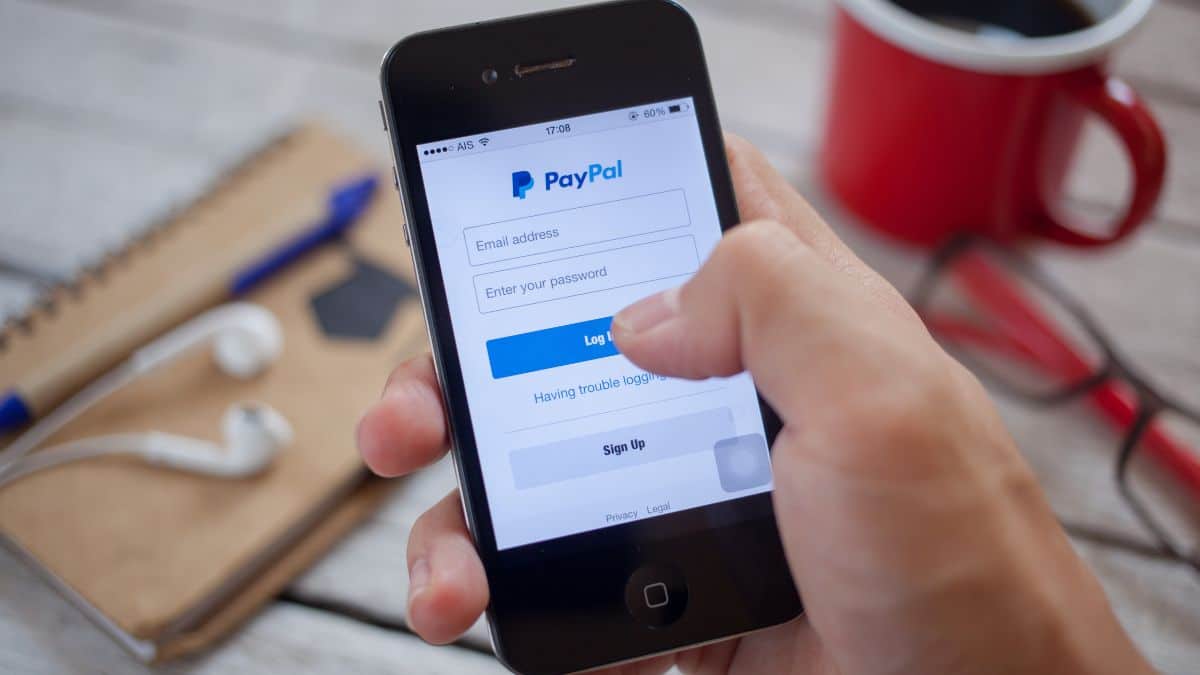Introduction
Welcome to the world of eBook publishing! In this digital age, creating and selling eBooks has become a popular and profitable venture for writers and entrepreneurs alike. Whether you’re a seasoned writer looking to monetize your expertise or a budding author exploring new ways to share your ideas, publishing an eBook can open up a world of opportunities. In this guide, we will take you through the process of creating and marketing your very own money-making eBook.
Why choose eBooks over traditional print books? Well, the answer is simple: convenience and accessibility. eBooks can be instantly downloaded and read on various devices such as smartphones, tablets, and eReaders. They take up no physical space and can be easily carried around, making them the preferred choice for readers on the go. Moreover, publishing an eBook eliminates the need for printing, warehousing, and distribution costs, allowing you to maximize your profits.
Creating a successful eBook, however, requires more than just putting words on a digital page. You need to have a well-researched topic, a compelling writing style, and a strategic marketing plan to ensure your eBook reaches its intended audience. In this guide, we will walk you through each step of the process, providing you with valuable insights and tips to maximize your chances of success.
Throughout this journey, it’s important to remember that writing an eBook is not a get-rich-quick scheme. It requires dedication, effort, and a willingness to learn and adapt. However, with the right approach and a bit of entrepreneurial spirit, you can create a valuable asset that generates passive income for years to come.
Are you ready to dive into the world of eBook publishing? Let’s get started!
Choosing a Profitable Topic
When it comes to creating a money-making eBook, the first step is to choose a profitable topic. Your topic should be one that not only interests you but also has a high demand in the market. Here are some tips to help you select the perfect topic for your eBook:
- Identify your passions and expertise: Start by brainstorming areas you are passionate about or have extensive knowledge in. Your eBook will require research and writing, so selecting a topic that you are genuinely interested in will make the process more enjoyable and rewarding.
- Research the market: Once you have a list of potential topics, conduct thorough market research to assess their demand. Look for popular keywords and trends related to your chosen topics. Use tools like Google Trends and keyword research tools to gauge the level of interest and competition.
- Target a specific audience: A niche topic that appeals to a specific audience can generate higher sales than a broad topic that caters to a wide audience. Consider who your ideal reader is and tailor your topic accordingly. For example, instead of writing a general eBook on “fitness,” focus on a more specific niche like “strength training for busy professionals.”
- Validate your topic: Before finalizing your topic, it’s essential to validate its profitability. Look for existing eBooks or products in the same niche and observe their sales rankings and customer reviews. This will give you an idea of the competition and the potential demand for your topic.
Remember, choosing a profitable topic is crucial for the success of your eBook. It’s essential to strike a balance between your passion and what the market demands. By selecting a topic that aligns with your expertise and interests while also meeting the needs of your target audience, you increase the chances of creating a valuable and profitable eBook.
Researching the Market
Once you have chosen a potential topic for your eBook, the next step is to conduct thorough market research. This step is crucial in understanding the demand, competition, and potential profitability of your chosen topic. Here are some key aspects to consider when researching the market for your eBook:
- Identify your target audience: Understand who your ideal readers are and what they are looking for. Consider their demographics, interests, and pain points. This will help you tailor your eBook’s content and marketing strategies to resonate with your audience.
- Conduct keyword research: Utilize keyword research tools to identify relevant keywords and phrases related to your topic. This will help you optimize your eBook’s title, description, and content for search engine visibility. It will also give you insights into popular search terms and trends within your niche.
- Analyze the competition: Look for existing eBooks, blogs, and websites that cover similar topics. Analyze their content, writing style, pricing, and overall success. Identify any gaps or opportunities that you can leverage to make your eBook stand out in the market.
- Seek feedback: Engage with your target audience through online forums, social media groups, or surveys. Ask for their opinions, challenges, and expectations regarding your topic. This will provide valuable insights and help you tailor your eBook to meet their needs.
By thoroughly researching the market, you will gain a deeper understanding of your target audience’s preferences and the competitive landscape. This knowledge will allow you to position your eBook effectively, differentiate it from existing offerings, and maximize its potential for success.
Remember that market research is an ongoing process. Stay updated with the latest trends, industry news, and customer feedback to keep your eBook relevant and captivating for your readers.
Writing a Compelling eBook
Now that you have a profitable topic and a deep understanding of your target market, it’s time to focus on writing a compelling eBook. The quality of your content will play a significant role in attracting readers, delivering value, and generating positive reviews. Here are some key tips to help you create an engaging and high-quality eBook:
- Outline your eBook: Start by creating a detailed outline that organizes your ideas and ensures a logical flow of information. This will serve as a roadmap for your writing process and help maintain a clear structure.
- Write in a conversational tone: Aim for a conversational writing style that resonates with your target audience. Use clear and concise sentences, avoid jargon, and incorporate relatable examples and stories to make your content more relatable and engaging.
- Provide valuable information: Ensure that your eBook offers practical insights, actionable tips, or unique perspectives on the chosen topic. Focus on delivering value and solving your readers’ problems to establish yourself as an authority in your niche.
- Break down complex concepts: If your topic involves complex ideas or technical terms, simplify them so that a broad audience can understand and benefit from your eBook. Use analogies, visuals, and step-by-step explanations to make complicated concepts more accessible.
- Include appropriate visuals and examples: Visual aids, such as charts, graphs, or supporting images, can enhance the readability and understanding of your eBook. Additionally, including real-life examples or case studies can make your content more relatable and credible.
- Edit and proofread: Prioritize editing and proofreading to eliminate grammatical errors, typos, and inconsistencies. Consider hiring a professional editor if you want a polished final product. A well-edited eBook demonstrates your professionalism and enhances the reading experience.
Remember, the key to writing a compelling eBook is to provide valuable, well-structured information in an engaging and relatable manner. By focusing on delivering quality content that appeals to your target audience, you will increase the chances of attracting readers and generating positive reviews.
Designing an Eye-Catching Cover
They say you shouldn’t judge a book by its cover, but when it comes to eBooks, a visually appealing cover plays a crucial role in attracting potential readers. Your eBook cover is the first thing people see, and it needs to grab their attention and convey the essence of your content. Here are some key tips to design an eye-catching cover:
- Understand your target audience: Research your target audience’s preferences, interests, and design trends within your niche. This will help you create a cover that resonates with your specific readers and stands out in the market.
- Simplicity is key: Keep your cover design simple and uncluttered. Avoid using too many elements or overwhelming fonts. A clean and minimalist look often has a stronger impact and makes your eBook appear more professional.
- Choose an appropriate color palette: Select colors that are visually appealing and align with the theme and mood of your eBook. Use color psychology to evoke the desired emotions and create a cohesive and visually pleasing design.
- Use high-quality images: Incorporate high-resolution images or illustrations that are relevant to your eBook’s content. Ensure that the images are crisp, clear, and visually appealing. If you’re not a designer, consider hiring a professional cover designer or using stock image websites.
- Place emphasis on the title and author name: Make sure your eBook’s title and your name as the author are prominently displayed on the cover. Choose fonts that are legible and suitable for your genre.
- Consider the thumbnail effect: Remember that your eBook cover will appear as a small thumbnail in online marketplaces. Ensure that your design stands out even in a reduced size and is easily recognizable.
- Test and iterate: Create different versions of your cover design and test them with your target audience. Gather feedback and make necessary adjustments to optimize your cover’s visual appeal and impact.
A well-designed cover increases your eBook’s chances of getting noticed amongst the sea of options available to readers. It helps create a positive first impression, builds credibility, and entices potential buyers to click and explore further.
Remember, a visually appealing cover design is an investment in your eBook’s success, so take the time and effort to create a cover that effectively represents the content and captures the attention of your target audience.
Editing and Proofreading
Editing and proofreading are vital steps in the eBook creation process. They ensure that your content is polished, error-free, and offers a seamless reading experience to your audience. Here are some key tips to effectively edit and proofread your eBook:
- Take a break: After completing the initial draft, step away from your eBook for a while. This break allows you to approach the editing process with fresh eyes and a clearer perspective.
- Perform a structural edit: Start by reviewing the overall structure and organization of your content. Check if the chapters flow logically, if the transitions are smooth, and if the information is presented in a coherent manner. Make necessary adjustments to ensure a seamless reading experience.
- Check for clarity and conciseness: Ensure that your writing is clear, concise, and free from unnecessary jargon or complex language. Simplify complex ideas, clarify any ambiguous statements, and remove any repetitive or redundant phrases.
- Attend to grammar and punctuation: Thoroughly review your eBook for grammar and punctuation errors. Check for subject-verb agreement, tense consistency, proper usage of commas, periods, and other punctuation marks. Consider using grammar-checking tools or seeking assistance from a professional proofreader.
- Verify factual accuracy: If your eBook includes factual information, such as statistics or historical data, double-check their accuracy and ensure proper citations if necessary. Maintaining factual integrity strengthens the credibility of your eBook.
- Consider readability: Pay attention to the readability of your eBook. Break up long paragraphs, use subheadings, bullet points, and numbered lists to enhance clarity and readability. Use a legible font and font size to ensure a comfortable reading experience across different devices.
- Proofread rigorously: Take the time to carefully proofread your eBook, focusing on spelling mistakes, typos, and formatting errors. Read your content aloud to catch any awkward or confusing sentences. Ask a trusted friend or colleague to proofread it as well to catch any mistakes you may have missed.
Edit and proofread your eBook multiple times to ensure it is error-free and of the highest quality. Remember, readers appreciate well-edited content that is free from distracting errors, allowing them to fully engage with your message.
By investing time and effort into the editing and proofreading process, you can elevate your eBook and provide a polished reading experience that will leave a positive impression on your audience.
Formatting for Different eReaders
Ensuring that your eBook is properly formatted for different eReaders is essential to provide a seamless reading experience and reach a broader audience. Different eReaders, such as Kindle, Nook, or Kobo, have varying file formats and specifications. Here are some key considerations for formatting your eBook:
- Choose the right file format: Determine the preferred file format for the eReader platforms you plan to publish on. The most commonly used formats include EPUB, MOBI, and PDF. EPUB is widely accepted and compatible with most eReaders, while MOBI is specific to Kindle devices. PDF is suitable for fixed-layout eBooks and is often used for documents or textbooks.
- Ensure readability and consistency: Format your eBook with readability in mind. Use a legible font, appropriate font size, and line spacing that are comfortable for reading on different screen sizes. Ensure consistency in formatting elements like headings, paragraphs, and spacing throughout the eBook.
- Optimize images and illustrations: Resize and compress any images or illustrations in your eBook to reduce file size without compromising quality. This ensures faster loading times and prevents distortion when viewed on different eReaders.
- Consider responsive design: If you are publishing an eBook with complex layouts or rich media, consider using a responsive design approach. This allows the content to adapt and adjust to different screen sizes, ensuring an optimal reading experience on various devices.
- Hyperlink internal and external references: If your eBook contains references to external websites, sources, or chapters within the eBook itself, add hyperlinks for easy navigation. This enhances the user experience and allows readers to access additional information without leaving the eBook.
- Test your eBook on multiple devices: Before publishing, verify that your eBook displays correctly on different eReaders and devices. Use online emulators or physical devices to ensure that the formatting, images, and interactive elements render correctly.
- Consider accessibility: Make your eBook accessible to a wider audience by ensuring compatibility with assistive technologies. Include alt text for images, use proper heading structures, and adhere to accessibility guidelines for a more inclusive reading experience.
Formatting your eBook for different eReaders is crucial to ensure that your content is displayed as intended and remains accessible to a wide range of readers. By taking the time to properly format your eBook, you enhance the reading experience and increase the chances of reaching a broader audience.
If formatting becomes overwhelming, consider utilizing eBook conversion services or seeking assistance from professionals who specialize in eBook formatting for a seamless and professional result.
Publishing Your eBook
Once your eBook is written, edited, and properly formatted, it’s time to publish and share it with the world. Publishing an eBook involves various steps and platforms to ensure maximum visibility and accessibility to your target audience. Here’s a guide to help you navigate the publishing process:
- Select a publishing platform: Choose a suitable platform to publish your eBook. Popular options include Amazon Kindle Direct Publishing (KDP), Smashwords, Apple Books, Google Play Books, and Barnes & Noble Nook Press. Research each platform’s requirements, royalty rates, and distribution reach to determine which aligns best with your goals.
- Create an account: Register for an account on your chosen platform. Provide the necessary details, including author information, tax information, and payment preferences. You may need to verify your identity or set up direct deposit for royalty payments.
- Upload your eBook: Follow the platform’s guidelines to upload your eBook file. Provide the required metadata such as title, author name, description, keywords, and categories. Include an engaging book blurb to entice potential readers to click and learn more about your eBook.
- Set the pricing and royalty options: Determine the pricing for your eBook. Consider factors like market demand, competition, and your goals. Some platforms offer promotional pricing options or the ability to participate in marketing campaigns. Set royalty options and decide on factors like DRM (Digital Rights Management) and lending capabilities.
- Create a professional author bio: Craft a compelling author bio that highlights your expertise and builds credibility. Include a professional author photo and links to your website or social media profiles to connect with your readers and build your author platform.
- Verify and review your eBook: Once uploaded, preview your eBook and ensure it displays correctly on the platform’s previewer or online reader. Check for any formatting issues, broken links, or missing content. Make any necessary adjustments before finalizing the publishing process.
- Select distribution options: Determine the distribution options for your eBook. Some platforms offer exclusive distribution (e.g., Amazon’s KDP Select program), while others allow you to distribute your eBook on multiple platforms simultaneously. Consider the advantages and limitations of each option to make an informed decision.
- Market your eBook: Develop a comprehensive marketing plan to promote your eBook. Utilize social media, author website or blog, email marketing, guest blogging, and other promotional strategies to generate awareness and drive sales. Engage with your target audience, seek reviews, and participate in relevant online communities to expand your reach.
- Track sales and reviews: Monitor your eBook sales and reviews regularly. Analyze the data to identify trends, track marketing efforts, and make informed decisions for future promotions and enhancements. Engage with readers by responding to reviews and feedback to build a loyal reader base.
Publishing your eBook is an exciting milestone in your journey as an author. By following these steps and leveraging the platforms and tools available, you can share your work with the world and start building a readership for your eBook.
Remember, publishing is just the beginning. Plan for ongoing marketing efforts, collaborations, and continuous improvement to maximize your eBook’s success.
Creating an Effective Sales Page
An effective sales page is crucial for capturing the attention of potential buyers and convincing them to purchase your eBook. It serves as the primary marketing tool for your book, providing key information and compelling reasons for readers to make a purchase. Here are some essential tips for creating an effective sales page:
- Write a captivating headline: Grab your reader’s attention with a compelling headline that highlights the unique selling points of your eBook. Use persuasive language to pique their curiosity and make them want to learn more.
- Create a captivating book description: Craft a book description that effectively summarizes your eBook and its benefits. Clearly communicate what readers can expect to gain from reading your book and why it’s worth their time and money.
- Include testimonials and reviews: Feature positive testimonials or reviews from readers who have already purchased and enjoyed your eBook. Testimonials add social proof and credibility, helping potential buyers feel more confident in their decision.
- Showcase the benefits: Clearly articulate the unique benefits and advantages of your eBook. Explain how it can solve a problem, provide valuable insights, or offer a transformational experience for readers. Highlight any bonus materials or resources included with the purchase.
- Offer a sample or preview: Provide a glimpse of your eBook by offering a sample chapter or a preview of the content. This allows readers to get a sense of your writing style and the value your eBook offers.
- Create visually appealing graphics: Incorporate visually appealing graphics, such as cover images, screenshots, or infographics, to enhance the visual appeal of your sales page. Use images strategically to highlight key points or demonstrate the value of your eBook.
- Include clear calls-to-action (CTAs): Guide readers towards the next steps by including clear and prominent CTAs. Encourage them to click on a “Buy Now” button or sign up for a newsletter for exclusive offers. Design your CTAs to stand out and create a sense of urgency.
- Offer a satisfaction guarantee: Increase buyer confidence by offering a satisfaction guarantee. Assure readers that if they are not happy with their purchase, they can get a refund or exchange. This eliminates the perceived risk and further motivates readers to make a purchase.
- Showcase your author credibility: Highlight your credentials, expertise, or any relevant experience that establishes your credibility as an author. This helps build trust and positions you as a knowledgeable and trustworthy source.
- Create a sense of urgency: Encourage immediate action by creating a sense of urgency. Offer limited-time discounts, bonuses, or other incentives to motivate readers to buy now rather than later.
Remember, the sales page is your opportunity to persuade potential readers to purchase your eBook. By effectively showcasing the value, benefits, and credibility of your book, you can increase conversions and generate more sales.
Regularly review and update your sales page based on feedback and data analysis to optimize its effectiveness in attracting and converting readers into buyers.
Marketing Your eBook
Marketing plays a vital role in the success of your eBook. It’s not enough to simply publish your eBook; you need to actively promote and market it to reach your target audience and generate sales. Here are some effective strategies to market your eBook:
- Build an author platform: Establish an online presence by creating a dedicated author website or a blog. Utilize social media platforms such as Facebook, Twitter, Instagram, or LinkedIn to connect with readers and promote your eBook.
- Create compelling content: Offer valuable content related to your eBook’s topic through blog posts, articles, or videos. This will attract your target audience and establish you as an authority in your niche, ultimately driving interest and sales for your eBook.
- Optimize your eBook’s metadata: Make sure your eBook’s metadata, including title, description, and keywords, is optimized for search engine visibility. Conduct keyword research to identify relevant and popular terms, optimizing them in your eBook’s metadata.
- Offer limited-time promotions: Create a sense of urgency and excitement by offering limited-time promotions or discounts for your eBook. This helps motivate readers to take immediate action and make a purchase.
- Engage with your readers: Interact with your readers through social media, author newsletters, or email marketing campaigns. Respond to their comments, questions, and reviews to build relationships and foster loyalty.
- Utilize book review sites and influencers: Reach out to book reviewers, bloggers, or social media influencers in your genre and offer them a free copy of your eBook in exchange for an honest review or promotion. Positive reviews and recommendations from trusted sources can significantly impact your eBook’s visibility and credibility.
- Participate in author events and virtual book tours: Explore opportunities to participate in local or virtual author events, book signings, or virtual book tours. These events allow you to connect with readers, gain exposure, and build relationships within the writing community.
- Create a robust email marketing strategy: Build an email list of interested readers and develop a consistent email marketing strategy. Offer exclusive content, discounts, or updates to your subscribers to keep them engaged and to promote your eBook.
- Collaborate with other authors: Collaborate with other authors in your genre for joint promotional efforts. This can include cross-promoting each other’s eBooks, hosting joint giveaways or events, or contributing to each other’s blogs or newsletters.
- Seek media coverage: Pitch your eBook to relevant media outlets such as newspapers, magazines, podcasts, or radio shows. Craft a compelling press release and reach out to journalists or hosts who may be interested in featuring you and your eBook.
Remember, marketing your eBook is an ongoing effort. Continuously analyze your marketing strategies, experiment with new ideas, and adapt your approach to maximize your book’s visibility and sales potential.
Combine multiple marketing tactics and consistently engage with your target audience to build a strong author brand and increase the success of your eBook.
Building an Email List
Building an email list is a valuable asset for marketing your eBook and establishing a direct line of communication with your readers. An engaged and loyal email list can lead to increased sales, word-of-mouth referrals, and long-term relationships with your audience. Here’s how you can effectively build an email list:
- Create an enticing lead magnet: Offer a valuable incentive to entice readers to sign up for your email list. This can be a free sample chapter, a mini eBook, a checklist, or any other resource related to your eBook’s topic that provides value to your potential readers.
- Add opt-in forms to your website: Place strategically-placed opt-in forms on your author website, blog, or landing pages. Make it easy for visitors to subscribe by using eye-catching designs and compelling call-to-action buttons.
- Use content upgrades: Offer exclusive bonus content or resources within your blog posts or articles in exchange for an email subscription. This encourages readers to join your list to access the additional value you’re providing.
- Promote your email list on social media: Leverage your social media platforms to promote your email list and encourage followers to subscribe. Utilize social media ads, pinned posts, or call-to-action buttons to direct your audience to your email signup forms.
- Host giveaways or contests: Run giveaways or contests with entry requirements that include subscribing to your email list. This not only helps attract new subscribers but also creates a sense of excitement and engagement among your existing audience.
- Offer exclusive content and perks: Provide exclusive content, early access to new releases, exclusive discounts, or behind-the-scenes updates to incentivize readers to join your email list. Make them feel special and valued as part of your inner circle.
- Attend author events and collect emails: If you participate in author events or conferences, have a sign-up sheet or a tablet available for collecting email addresses. Engage with attendees and share the benefits they will receive by subscribing to your list.
- Collaborate with others in your industry: Partner with other authors, bloggers, or influencers in your genre to cross-promote each other’s email lists. This can expand your reach to a new audience who may be interested in your eBook.
- Optimize your email signup process: Ensure that the process of subscribing to your email list is quick and easy. Keep the number of required form fields to a minimum and use double opt-in to confirm subscriptions and maintain a high-quality list.
- Deliver valuable content consistently: Once you have subscribers on your email list, deliver regular content that provides value, such as exclusive tips, resources, updates, or sneak peeks into your writing process. Keep your subscribers engaged and excited about your eBook and future releases.
Building an email list takes time and effort, but it is a powerful tool for connecting with your readers and promoting your eBook. Focus on providing value, engaging your subscribers, and nurturing relationships to cultivate a loyal community around your writing.
Remember, an email list is more than just a list of names and addresses. It is a direct line of communication that allows you to connect with your readers on a personal level and build a loyal audience that supports your eBook and future projects.
Setting a Competitive Price
Setting the right price for your eBook is crucial to attract potential buyers, maximize your revenue, and remain competitive in the market. Finding the sweet spot requires careful consideration of various factors. Here are some key tips to help you set a competitive price for your eBook:
- Research the market: Investigate the pricing of similar eBooks in your genre or niche. Look at bestsellers, new releases, and books by established authors. Analyze their price points and consider the perceived value they offer to readers.
- Consider your goals: Determine your primary goal for the eBook’s pricing. Are you aiming for maximum revenue, building a wide readership, or using your eBook as a marketing tool for other products/services? Understanding your goal will influence your pricing strategy.
- Assess the length and content: Consider the length, depth, and quality of your eBook’s content. Longer or more comprehensive eBooks can command a higher price than shorter ones. Assess the value and expertise you offer to readers through your content.
- Take the perceived value into account: Assess the uniqueness, practicality, and potential impact of your eBook on readers’ lives or areas of interest. Highlight these factors in your marketing efforts to raise the perceived value and justify a higher price.
- Experiment with price points: Consider starting with an initial lower price point to attract readers and garner positive reviews. As you build a reputation and receive feedback, you can gradually increase the price to match the perceived value and demand.
- Consider pricing strategies: Explore different pricing strategies such as offering limited-time discounts, bundle deals, or subscription options. These strategies can help generate initial interest and incentivize potential buyers.
- Utilize dynamic pricing: Monitor and adapt your pricing based on market trends, competition, and reader demand. Consider leveraging promotional periods or discounts during holiday seasons or special events to drive sales.
- Analyze your production and distribution costs: Consider the expenses involved in producing, marketing, and distributing your eBook. Calculate the costs of cover design, editing, formatting, and any advertising or promotional activities. Ensure that your pricing model covers these costs and allows for a reasonable profit margin.
- Solicit feedback: Seek input from beta readers, early buyers, or members of your target audience. Ask them what they perceive as a fair price for your eBook and whether they see the value you intend to offer.
- Monitor sales and adjust as needed: Continuously monitor your eBook’s sales performance and adjust the price accordingly. Experiment with different price points, discounts, or pricing models to identify the optimal strategy for your eBook.
Remember, setting a competitive price requires finding the right balance between attracting readers, maximizing revenue, and reflecting the value you offer. Regularly evaluate your pricing strategy based on market trends and reader feedback to stay competitive in the ever-evolving eBook market.
Keep in mind that pricing is not fixed, and you can always adjust your pricing strategy over time based on market dynamics and the goals you aim to achieve with your eBook.
Generating Passive Income from Your eBook
An eBook has the potential to generate passive income, allowing you to earn money while you focus on other projects or endeavors. By implementing effective strategies, you can create a sustainable stream of income from your eBook. Here are some key ways to generate passive income:
- Choose the right pricing model: Consider different pricing models such as a one-time purchase, subscription-based access, or bundle deals. Analyze the preferences of your target audience and the nature of your eBook to determine the most suitable pricing model to maximize passive income.
- Optimize your sales funnel: Create a well-structured sales funnel that guides interested readers toward making a purchase. Utilize compelling call-to-action buttons, well-designed landing pages, and effective email marketing campaigns to convert leads into buyers.
- Utilize affiliate marketing: Partner with relevant companies or influencers in your niche and offer them an affiliate commission for promoting your eBook. This allows you to tap into their audience and generate passive income through their promotional efforts.
- Explore audiobook and foreign language translations: Expand the reach of your eBook by creating an audiobook version or translating it into different languages. This opens up new markets and revenue streams, increasing your potential for passive income.
- Offer additional products or services: Create supplementary products or services related to your eBook. These can include online courses, consulting services, or merchandise. By offering complementary resources, you can generate additional passive income while leveraging the expertise showcased in your eBook.
- Consider print-on-demand: Explore the option of offering a print-on-demand version of your eBook. This allows readers who prefer physical books to purchase a printed copy, opening up another income stream for you.
- Optimize keywords for discoverability: Implement Search Engine Optimization (SEO) strategies to optimize your eBook’s metadata and description. This increases its visibility on search engines, making it more likely to be discovered by potential buyers organically.
- Engage in ongoing marketing efforts: Continue to market and promote your eBook even after its initial release. Engage with your audience on social media, regularly update your website or blog, and participate in relevant events to maintain visibility and drive continuous passive income.
- Monitor and analyze sales data: Regularly monitor sales data and analyze the performance of your eBook. Identify trends, patterns, and areas for improvement. Use this information to refine your marketing strategies and optimize your eBook’s passive income potential.
- Invest in long-term marketing initiatives: Consider investing in advertising, social media campaigns, or content marketing to enhance the long-term visibility and reach of your eBook. Strategic marketing efforts can yield higher sales and passive income over time.
Generating passive income from your eBook requires a combination of effective marketing, optimization, and ongoing promotion. By implementing these strategies and continually refining your approach, you can create a sustainable and potentially lucrative income stream from your eBook.
Remember that passive income does not happen instantaneously. It requires consistent effort, adaptability, and a long-term perspective. With dedication and strategic planning, your eBook can become a valuable asset that generates income for years to come.
Conclusion
Congratulations on reaching the end of this guide on how to create and monetize your own eBook! Publishing an eBook can be an exciting and rewarding endeavor that allows you to share your knowledge, creativity, and passion with the world while generating income. As you embark on this journey, keep in mind the following key takeaways:
Choose a profitable topic that aligns with your interests and the market demand. Thoroughly research your target audience and competition to ensure you are delivering value and standing out in the crowded eBook market. Write a compelling eBook with clear and engaging content, and pay attention to editing and proofreading to ensure a high-quality final product. Design an eye-catching cover that captures attention and entices potential readers. Format your eBook to be compatible with various eReaders, ensuring a seamless reading experience for your audience.
When it comes to publishing your eBook, select the right platform(s) that align with your goals, and optimize your sales page to entice readers and drive conversions. Implement effective marketing strategies to increase visibility and reach your target audience. Build an email list to establish direct communication with your readers and foster long-term relationships. Set a competitive price for your eBook that reflects its value and attracts buyers. Explore opportunities to generate passive income through various strategies, such as affiliate marketing, supplementary products or services, and foreign language translations.
Remember, success in the eBook industry takes time, effort, and continual adaptation. Continuously engage with your readers, analyze sales data, and refine your marketing strategies to maximize your eBook’s potential. Stay current with industry trends, seek feedback from your audience, and never stop learning and improving your craft. With persistence, dedication, and a solid plan, your eBook can become a valuable asset that generates income and opens up new opportunities.
Now, it’s time for you to take the knowledge you’ve gained and put it into action. Start brainstorming topics, outlining your eBook, and immersing yourself in the exciting world of eBook publishing. Take that first step, and watch as your creativity and expertise come to life in the form of a successful and profitable eBook. Best of luck!

























